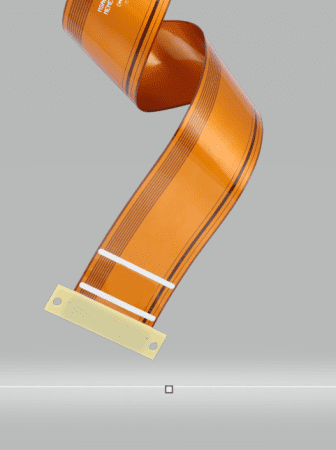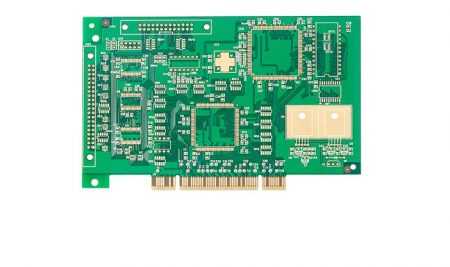- +86-755-23012705
- Building 3, Jinfeng Industrial Park, Fuyong Street, Baoan District, Shenzhen ,China
- [email protected]
Menu
Rigid PCB Material considered FR-4 is flame-resistant, uses a woven fiberglass reinforcement, and is primarily an epoxy-based resin system.
So what can be different about these materials? The most obvious difference between the commercially available FR-4 materials is in Tg values. Specification sheet 21 refers to an FR-4 with a minimum Tg of 110℃. More common are FR-4 materials with Tg values between 130℃to 140℃ and 170℃ to 180℃. Therefore, it is obvious that FR-4 materials can consist of different types of epoxy resins. Indeed, there are many types of epoxy resins that will provide differing Tg values, as well as differences in other properties.
FR-4 materials with non-halogen-based flame retardants, as well as different Tg ranges. Sheets 92 and 94 indicate the use of a phosphorus-based flame retardant, whereas sheets 93 and 95 show the use of aluminum hydroxide. So FR-4 may include different types of flame retardants.
In addition, several FR-4 materials contain inorganic fillers. These filters are often used to reduce the amount of Z-axis expansion. Some of these materials also have requirements for Td, Z-axis expansion, and time-to-delamination, which historically were not properties included on the specification sheets. The addition of specification sheets with these properties was partly driven by their relevance to compatibility with lead-free assembly processes.

Image 1: FR-4 stifferner for flexible pcb
Finally, specification sheet 82 covers an FR-4 material catalyzed for an additive copper plating process. A catalyst used for this material is a kaolin clay filler coated with palladium. In short, there are many combinations of resin system, flame retardant, and filler that can result in many types of FR-4.
FR-4 materials have been the most successful, most commonly used materials in printed circuit manufacturing for many years. Why? Well, as we just discussed above, FR-4 actually encompasses a range of material types, even though they share certain properties and are primarily epoxy-based. The result is that there is often an FR-4 material readily available for the most common end-use applications. For relatively simple applications, the 130℃to 140℃Tg FR-4s have become the material of choice.
In higher layer count multilayer circuits, in very thick circuits, as well as those requiring improved thermal properties, the 170℃to 180℃Tg FR-4s have become the material of choice. With the advent of lead-free assembly, Td and other properties must also be considered along with Tg. Further, as noted above, higher Tg does not always translate to better performance in lead-free assembly applications.

Image 2: 6L HDI Rigid PCB material is FR-4
In other words, as the range of end-use applications has grown, so has the range of available FR-4 materials. In addition, the components used in FR-4 materials, particularly woven fiberglass cloth and epoxy resins, provide a very good combination of performance, processability, and cost. The range of woven fiberglass cloth styles available makes it easy to control dielectric and overall circuit thicknesses. As noted earlier, the range of epoxy resin types also makes it relatively simple to tailor material properties to end-use applications.
The combination of good electrical, thermal, and mechanical properties of epoxies also explains why they have become the primary type of resin used in printed circuits. Epoxy-based materials are also relatively easy to process through conventional printed circuit manufacturing processes, at least in comparison to some of the other types of materials available. The processability of these materials has helped control the cost of FR-4-based printed circuits.
Last, the development of FR-4 materials took advantage of established manufacturing processes and materials. Weaving processes have been in place for many years. The fundamental process of weaving fiberglass yarns into glass cloth is not so different from weaving textile yarns into cloth fabrics. Using the same basic manufacturing technology avoided additional upfront research and development costs. Still, more importantly, it avoids to some extent highly specialized capital assets and aids in achieving economies of scope for the suppliers of fiberglass cloth.

Image 3: Rigid PCB with gold finger
The result is good control of the costs of these materials. Likewise, epoxy resins have been in use in a wide range of applications outside of printed circuits, resulting in a huge installed manufacturing base for these types of materials. This also results in good cost competitiveness for epoxy resins. In summary, the range of FR-4 types and their unique combination of performance, processability, and cost characteristics have made them the workhorse of the printed circuit industry manufacturer.
Take Your Projects to New Heights with XPCB Limited
XPCB Limited offers top-notch PCB manufacturing, quick-turnaround prototyping, and turnkey PCBA services designed to make your projects shine. Count on us to bring your ideas to life with efficiency and quality. Your success matters to us, and we’re here to make your innovation journey smooth and rewarding.






XPCB Limited is a premium PCB & PCBA manufacturer based in China.
We specialize in multilayer flexible circuits, rigid-flex PCB, HDI PCB, and Rogers PCB.
Quick-turn PCB prototyping is our specialty. Demanding project is our advantage.
Tel : +86-136-3163-3671
Fax : +86-755-2301 2705
Email : [email protected]
© 2023 - XPCB Limited All Right Reserve
